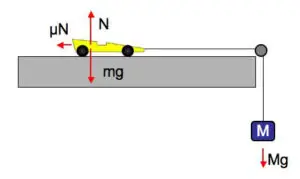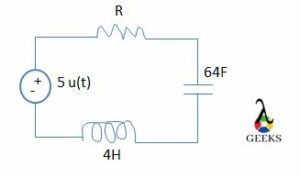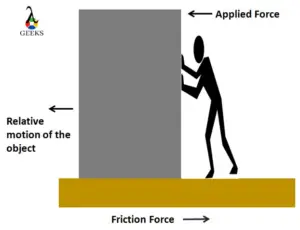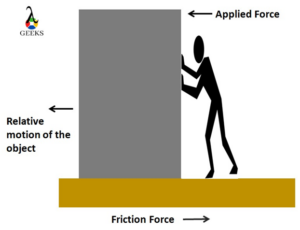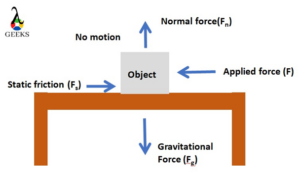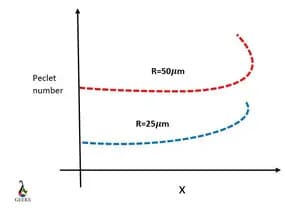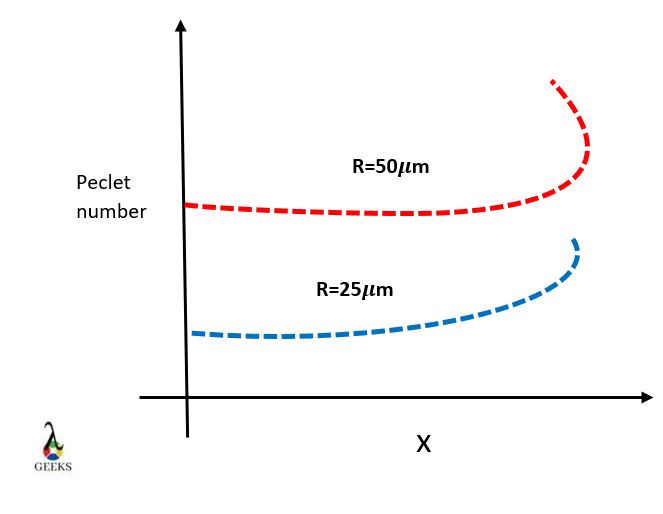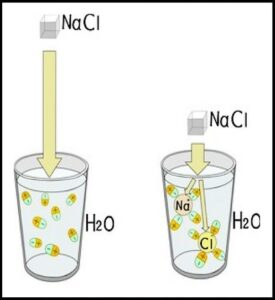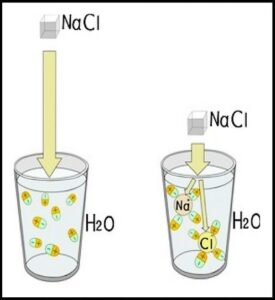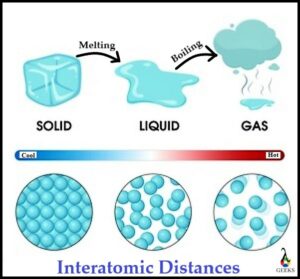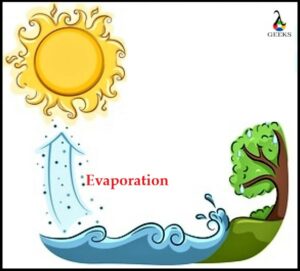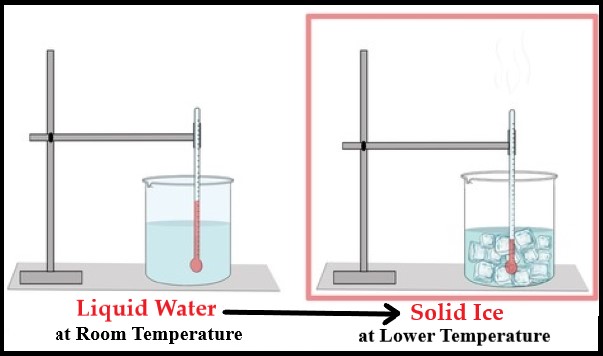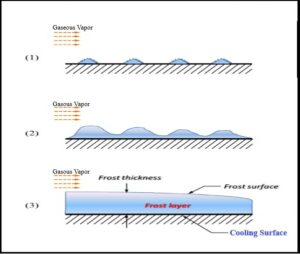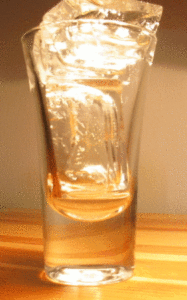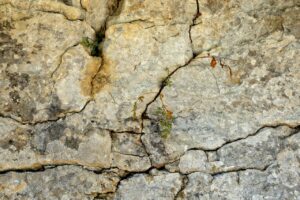Static friction is the force that prevents an object from moving when a force is applied to it. It is often greater than kinetic friction, which is the force that opposes the motion of an object that is already moving. The reason for this is that static friction is caused by the interlocking of irregularities on the surfaces of two objects in contact. These irregularities need to be overcome in order for the object to start moving. Once the object is in motion, the irregularities are no longer interlocked, resulting in a lower frictional force. In summary, static friction is greater than kinetic friction because it requires more force to overcome the initial resistance to motion.
Key Takeaways
| Static Friction | Kinetic Friction |
|---|---|
| Higher | Lower |
Understanding Friction
Friction is a fundamental concept in physics that plays a crucial role in our everyday lives. It is the force that opposes the relative motion or tendency of motion between two surfaces in contact. Friction is present in various forms and has both practical and scientific significance.
Definition and Importance
Friction can be defined as the resistance encountered when two objects move or try to move against each other. It is a result of the interaction between the surface irregularities of the objects in contact. This interaction creates a force known as the frictional force, which acts parallel to the surfaces and opposes the motion.
The importance of friction lies in its ability to provide stability and control. Without friction, it would be challenging to walk, drive a car, or even hold objects. Friction allows us to grip surfaces, prevents objects from sliding uncontrollably, and enables us to perform various tasks in our daily lives.
Types of Friction
Friction can be classified into different types based on the conditions under which it occurs. The two main types of friction are static friction and kinetic friction.
-
Static Friction: Static friction is the resistance encountered when two objects are at rest and attempting to move. It prevents the objects from sliding against each other until a certain force is applied to overcome it. The force required to initiate motion is known as the force of static friction. This type of friction is influenced by factors such as the nature of the surfaces in contact, the force pressing the surfaces together, and the surface roughness.
-
Kinetic Friction: Kinetic friction, also known as sliding friction, occurs when two objects are in motion relative to each other. It opposes the motion and acts in the direction opposite to the velocity of the objects. The force of kinetic friction is generally less than the force of static friction. Factors such as the nature of the surfaces, the force pressing the surfaces together, and the presence of lubricants affect the magnitude of kinetic friction.
Understanding the physics of friction is essential for comprehending the laws of motion and the behavior of objects in motion. The coefficient of friction, which quantifies the frictional resistance between two surfaces, is a key parameter in analyzing frictional forces. It represents the ratio of the force of friction to the normal force pressing the surfaces together.
Friction is not limited to solid surfaces but also occurs in fluids and gases. In everyday life, we encounter various examples of friction, such as the resistance experienced when walking on a rough surface, the grip between car tires and the road, or the rolling of a ball on the ground.
In summary, friction is a fundamental force that affects the motion and stability of objects. By understanding the different types of friction and the factors that influence it, we can better comprehend the physics of movement and its applications in our daily lives.
Deep Dive into Static Friction
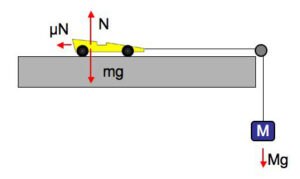
Static friction is a fundamental concept in physics that plays a crucial role in our everyday lives. It is the force that prevents an object from moving when a force is applied to it. In this deep dive, we will explore the definition and explanation of static friction, the factors that affect it, and its significance in our daily lives.
Definition and Explanation
Static friction is the force that acts between two surfaces in contact with each other, preventing relative motion between them. It occurs when an object is at rest and a force is applied to it, but the object does not move. This force arises due to the interlocking of microscopic irregularities on the surfaces, creating resistance to motion.
To understand static friction better, it is essential to differentiate it from kinetic friction. While static friction prevents motion, kinetic friction comes into play when the object is already in motion. The force of static friction is generally greater than the force of kinetic friction, as it requires more energy to overcome the initial resistance and set an object in motion.
The magnitude of static friction depends on the coefficient of friction, which is a property of the materials in contact. The coefficient of friction is a dimensionless value that represents the ratio of the force of friction to the normal force between the surfaces. It varies depending on the nature of the materials and their surface roughness.
Factors Affecting Static Friction
Several factors influence the magnitude of static friction between two surfaces. These factors include:
- Surface Roughness: The rougher the surfaces, the greater the interlocking of irregularities, resulting in higher static friction.
- Normal Force: The force exerted perpendicular to the surfaces affects the magnitude of static friction. As the normal force increases, so does the static friction.
- Nature of Materials: Different materials have different coefficients of friction. For example, rubber on concrete has a higher coefficient of friction than ice on ice.
- Surface Area: The larger the contact area between the surfaces, the greater the static friction.
Understanding these factors is crucial in various fields, such as engineering, where frictional resistance plays a significant role in designing structures and machinery. By manipulating these factors, engineers can optimize the performance and efficiency of mechanical systems.
Role of Static Friction in Daily Life
Static friction is present in numerous aspects of our daily lives, often without us even realizing it. Here are a few examples:
- Walking: When we walk, static friction between the soles of our shoes and the ground prevents us from slipping. The coefficient of friction between the shoe material and the walking surface determines the grip and stability.
- Driving: The static friction between the tires of a vehicle and the road surface allows us to accelerate, decelerate, and make turns safely. The coefficient of friction between the tire rubber and the road plays a crucial role in maintaining control.
- Opening Jars: When we struggle to open a tightly sealed jar, it is the static friction between the lid and the jar’s rim that makes it difficult. Applying more force increases the static friction until it is overcome, allowing the lid to twist open.
- Writing: The friction between the pen or pencil and the paper enables us to write. Without static friction, the writing instrument would slide uncontrollably, making it impossible to create legible words.
These examples illustrate how static friction is an integral part of our daily activities. By understanding the physics of friction and its role in our lives, we can appreciate the importance of this force and its impact on our interactions with the physical world.
In conclusion, static friction is a fascinating concept that governs the resistance to motion between two surfaces in contact. By exploring its definition, factors affecting it, and its role in our daily lives, we gain a deeper understanding of the physics of movement and the significance of friction in our everyday experiences.
Deep Dive into Kinetic Friction
Friction is a fundamental concept in physics that plays a crucial role in our everyday lives. It is the force that opposes the motion of an object when it comes into contact with another surface. In this deep dive, we will explore the fascinating world of kinetic friction and its various aspects.
Definition and Explanation
Kinetic friction, also known as sliding friction, is the force that acts between two surfaces in relative motion. It comes into play when an object slides or moves across another surface. Unlike static friction, which prevents the object from moving initially, kinetic friction acts to resist the motion of the object.
The magnitude of kinetic friction depends on several factors, including the nature of the surfaces in contact, the force pressing the surfaces together, and the roughness of the surfaces. The coefficient of friction, denoted as μ, is a dimensionless quantity that represents the ratio of the force of friction to the normal force between the surfaces.
To better understand the concept, let’s compare kinetic friction with static friction. While static friction keeps an object at rest, kinetic friction comes into play once the object is in motion. The force of kinetic friction is generally lower than static friction, as it only needs to counteract the motion rather than prevent it entirely.
Factors Affecting Kinetic Friction
Several factors influence the magnitude of kinetic friction between two surfaces. These factors include:
-
Surface Roughness: The rougher the surfaces in contact, the greater the frictional force. Irregularities and bumps on the surfaces create more points of contact, leading to increased friction.
-
Normal Force: The force pressing the surfaces together, known as the normal force, affects the magnitude of kinetic friction. As the normal force increases, so does the frictional force.
-
Nature of Surfaces: Different materials have varying coefficients of friction. For example, rubber on concrete exhibits higher friction than ice on ice.
-
Sliding Speed: The speed at which the object slides across the surface can also influence kinetic friction. In some cases, the frictional force may increase with higher sliding speeds.
Role of Kinetic Friction in Daily Life
Kinetic friction plays a significant role in our daily lives, often without us even realizing it. Here are a few examples:
-
Walking: When we walk, the friction between our shoes and the ground allows us to move forward. Without kinetic friction, we would slip and struggle to maintain our balance.
-
Braking: The friction between the brake pads and the wheels of a vehicle enables us to slow down or come to a stop. Kinetic friction converts the kinetic energy of the moving vehicle into heat, helping us control our speed.
-
Writing: The friction between the pen or pencil and the paper allows us to create legible marks. Without kinetic friction, the writing instrument would simply slide across the paper without leaving any trace.
-
Sports: Kinetic friction is essential in various sports, such as soccer, where players rely on the friction between their shoes and the ground to change direction, stop, or accelerate.
Understanding the physics of friction, particularly kinetic friction, helps us comprehend the principles behind motion and resistance. By considering factors like surface roughness, normal force, and the nature of surfaces, we can better predict and manipulate the frictional forces in our daily lives.
So, the next time you walk, drive, or engage in any activity involving motion, take a moment to appreciate the role of kinetic friction and its impact on our everyday experiences.
Comparison between Static and Kinetic Friction
Friction is a force that opposes the relative motion between two surfaces in contact. It plays a crucial role in our everyday lives, affecting how objects move and interact with each other. When it comes to friction, there are two main types to consider: static friction and kinetic friction. Let’s explore the similarities and differences between these two types and delve into some practical examples.
Similarities and Differences
Both static and kinetic friction are forms of frictional forces that act between two surfaces in contact. However, they differ in their behavior and characteristics.
Static Friction:
Static friction is the force that prevents an object from moving when an external force is applied to it. It acts in the opposite direction to the applied force, effectively keeping the object at rest. The magnitude of static friction can vary depending on the force applied, but it always matches the applied force until a certain threshold is reached.
Kinetic Friction:
Kinetic friction, on the other hand, is the force that opposes the motion of an object that is already in motion. It acts in the direction opposite to the object’s velocity, slowing it down. Unlike static friction, the magnitude of kinetic friction remains relatively constant once the object is in motion.
| Static Friction | Kinetic Friction |
|---|---|
| Acts on stationary objects | Acts on moving objects |
| Increases with the applied force until a threshold is reached | Remains relatively constant |
| Can be greater than kinetic friction | Is generally less than static friction |
Practical Examples
To better understand the concepts of static and kinetic friction, let’s consider some practical examples:
-
Pushing a Heavy Box: Imagine you’re trying to push a heavy box across the floor. Initially, the box may not move due to static friction. As you apply more force, the static friction gradually increases until it reaches its maximum value, allowing the box to start moving. Once the box is in motion, kinetic friction comes into play, opposing its movement and making it harder to accelerate or maintain a constant speed.
-
Sliding a Book on a Table: When you slide a book across a table, static friction prevents the book from sliding off the table. As you increase the force, the static friction also increases until it reaches a point where the book starts sliding. Once the book is in motion, kinetic friction acts to slow down its movement, requiring more force to keep it sliding at a constant speed.
-
Car Braking: When you apply the brakes in a car, the brake pads exert a force on the rotating wheels. Initially, static friction prevents the wheels from locking up, allowing the car to slow down gradually. Once the wheels start rotating slower, kinetic friction takes over, further reducing the car’s speed until it comes to a stop.
In all these examples, the interplay between static and kinetic friction is evident. Understanding the differences between these two types of friction is crucial for predicting and controlling the motion of objects in various situations.
So, whether you’re pushing a heavy object, sliding something across a surface, or braking a vehicle, the physics of friction, both static and kinetic, are at play, influencing the motion and resistance you experience in your everyday life.
Why is Static Friction Greater than Kinetic Friction?
Scientific Explanation
When it comes to the physics of friction, understanding the difference between static and kinetic friction is crucial. Static friction refers to the force that prevents an object from moving when a force is applied to it. On the other hand, kinetic friction is the force that opposes the motion of an object already in motion. The question arises, why is static friction greater than kinetic friction?
To delve into the scientific explanation, we need to consider the role of the coefficient of friction. The coefficient of friction is a value that represents the interaction between two surfaces in contact. It determines the amount of frictional force between the surfaces. In the case of static friction, the coefficient of friction is typically higher than that of kinetic friction.
Role of Coefficient of Friction
The coefficient of friction plays a significant role in determining the magnitude of static and kinetic friction. It depends on various factors, including the nature of the surfaces in contact, surface roughness, and the presence of any lubricants. The coefficient of friction is generally higher for static friction because it takes more force to overcome the initial resistance and set an object in motion.
To better understand this concept, let’s consider an example. Imagine trying to push a heavy box across a rough floor. Initially, the box remains stationary due to the static friction between the box and the floor. The coefficient of static friction is higher because it requires a greater force to overcome the resistance and initiate movement. Once the box starts moving, the friction transitions to kinetic friction, which has a lower coefficient of friction.
Simple Explanation for Better Understanding
To put it simply, static friction is greater than kinetic friction because it takes more force to start an object’s motion than to keep it in motion. When an object is at rest, the surfaces in contact are interlocked at a microscopic level, creating a stronger bond. This bond needs to be broken by applying a force greater than the static friction to initiate motion.
Once the object is in motion, the surfaces slide over each other, resulting in a lower frictional force known as kinetic friction. The kinetic friction is generally lower because the surfaces are already in motion and experience less resistance compared to the initial static friction.
In everyday life, we encounter examples of static and kinetic friction. For instance, when you try to push a heavy piece of furniture, you may notice that it requires more effort to get it moving initially. Once it starts sliding, the force required to keep it in motion decreases. This phenomenon is a result of the difference between static and kinetic friction.
Understanding the concept of static friction being greater than kinetic friction is essential in various fields, including engineering, physics, and everyday life. By comprehending the factors affecting friction and the role of the coefficient of friction, we can better analyze and predict the behavior of objects in motion, ensuring efficient designs and smoother operations.
Is Static Friction Always Greater than Kinetic?
Friction is a fundamental concept in physics that plays a crucial role in our everyday lives. It is the force that opposes the relative motion between two surfaces in contact. When we think about friction, we often associate it with the idea that static friction is always greater than kinetic friction. However, is this always the case? Let’s explore the possibility of kinetic friction being greater and examine the conditions and scenarios where this might occur.
Exploring the Possibility of Kinetic Friction being Greater
In most cases, static friction is indeed greater than kinetic friction. Static friction refers to the force that prevents an object from moving when an external force is applied to it. On the other hand, kinetic friction is the force that opposes the motion of an object that is already in motion. The difference between the two lies in the nature of the surfaces in contact and the forces acting upon them.
To understand why static friction is usually greater, we need to consider the factors that affect frictional force. The coefficient of friction, which depends on the nature of the surfaces in contact, plays a significant role. The rougher the surfaces, the higher the coefficient of friction, and thus, the greater the frictional force. Additionally, the normal force, which is the force exerted by a surface perpendicular to the object, also influences the frictional force.
Conditions and Scenarios
While static friction is generally greater than kinetic friction, there are certain conditions and scenarios where the opposite can occur. Let’s take a closer look at these situations:
-
Surface Roughness: If the surfaces in contact have different roughness characteristics, it is possible for kinetic friction to be greater. For example, if a rough surface is sliding against a smoother surface, the roughness of the sliding surface can increase the frictional resistance, resulting in higher kinetic friction.
-
Motion Resistance: In some cases, the motion of an object can create additional resistance that increases the kinetic friction. This can happen when there are external forces, such as air resistance or fluid resistance, acting against the motion of the object. These additional resistive forces can contribute to a higher overall kinetic friction.
-
Physics of Movement: The physics of movement can also influence the relationship between static and kinetic friction. For instance, in the case of rolling friction, where an object rolls without sliding, the kinetic friction can be lower than static friction. This is because rolling motion involves less surface contact and deformation compared to sliding motion.
It is important to note that while there are scenarios where kinetic friction can be greater than static friction, these situations are relatively rare compared to the general rule that static friction is greater. Understanding the physics of friction and the factors that influence it can help us comprehend the complexities of friction in everyday life.
In conclusion, while static friction is typically greater than kinetic friction, there are conditions and scenarios where the opposite can occur. Factors such as surface roughness, motion resistance, and the physics of movement can influence the relationship between static and kinetic friction. By exploring these possibilities, we gain a deeper understanding of the fascinating world of friction and its impact on our daily experiences.
What Happens When Static Friction is Greater than Kinetic Friction?
When the static friction between two surfaces is greater than the kinetic friction, it means that it takes more force to initiate motion than to keep the objects in motion. This phenomenon has several implications on the motion of objects and can be observed in various real-life examples and applications.
Impact on Motion
When static friction is greater than kinetic friction, it means that there is a higher resistance to overcome when trying to set an object in motion. This is because static friction is the force that prevents two surfaces from sliding past each other when they are at rest. It acts in the opposite direction to the applied force, making it harder to initiate motion.
Once the object starts moving, the static friction transitions into kinetic friction. Kinetic friction is the force that opposes the relative motion between two surfaces in contact. It is generally lower than static friction, allowing the object to move more easily once it is in motion.
The difference between static and kinetic friction can be understood through the concept of the coefficient of friction. The coefficient of friction is a value that represents the frictional force between two surfaces. It is different for static and kinetic friction, indicating the varying levels of resistance.
Real-life Examples and Applications
Understanding the difference between static and kinetic friction is crucial in various real-life scenarios. Here are some examples and applications that demonstrate the impact of static friction being greater than kinetic friction:
-
Starting a Car: When a car is at rest, the static friction between the tires and the road surface is greater. This allows the car to remain stationary even when the engine is running. Once the driver applies enough force to overcome the static friction, the car starts moving, and the friction transitions to kinetic friction.
-
Pushing Objects: When pushing a heavy object, such as a bookshelf, the initial force required to overcome the static friction can be higher. Once the object starts moving, the kinetic friction reduces, making it easier to push the object.
-
Walking: The static friction between our shoes and the ground is essential for maintaining balance and preventing slipping. When we take a step, the static friction helps us push off the ground and propel ourselves forward. The transition to kinetic friction occurs when our foot slides during the walking motion.
-
Braking in Vehicles: When a vehicle brakes, the friction between the brake pads and the wheels is crucial for slowing down or stopping the vehicle. The static friction initially resists the motion of the wheels, allowing the brakes to engage. Once the wheels start moving slower, the friction transitions to kinetic friction, aiding in the braking process.
In conclusion, when static friction is greater than kinetic friction, it requires more force to initiate motion than to maintain it. This phenomenon has significant implications on the motion of objects in various real-life scenarios. Understanding the physics of friction and its impact on motion can help us comprehend the factors affecting frictional resistance and the physics of movement in our everyday lives.
Frequently Asked Questions
Addressing Common Queries
Here are some common questions about the physics of friction and their answers:
-
What is the physics of friction?
The physics of friction deals with the study of the forces that resist the relative motion of objects in contact. It involves understanding concepts such as static and kinetic friction, frictional force, and the factors that affect friction. -
What is the difference between static and kinetic friction?
Static friction refers to the force that prevents an object from moving when a force is applied to it. On the other hand, kinetic friction is the force that opposes the motion of an object that is already in motion. -
What is the frictional force?
Frictional force is the force that acts between two surfaces in contact and opposes their relative motion. It arises due to the irregularities in the surfaces and the interlocking of their microscopic features. -
What is the coefficient of friction?
The coefficient of friction is a dimensionless quantity that represents the ratio of the frictional force between two surfaces to the normal force pressing them together. It varies depending on the nature of the surfaces in contact. -
How do the laws of motion relate to friction?
Friction is governed by Newton’s laws of motion. The first law states that an object at rest will remain at rest unless acted upon by an external force. The second law relates the force of friction to the mass and acceleration of an object. The third law states that for every action, there is an equal and opposite reaction.
Clarifying Misconceptions
Let’s address some misconceptions about friction:
-
Is friction always caused by surface roughness?
While surface roughness can contribute to friction, it is not the only factor. Friction can also arise from adhesion between surfaces, intermolecular forces, and other factors. -
Is sliding friction the same as rolling friction?
No, sliding friction and rolling friction are different. Sliding friction occurs when two surfaces slide against each other, while rolling friction occurs when an object rolls over a surface. -
Is friction only present when objects are in motion?
No, friction can exist even when objects are at rest. This is known as static friction. It prevents objects from moving until a force is applied that overcomes the static frictional force. -
What is the definition of static friction and kinetic friction?
Static friction refers to the frictional force that prevents an object from moving, while kinetic friction is the force that opposes the motion of an object that is already in motion. -
Does frictional resistance depend on the weight of an object?
Frictional resistance depends on the normal force between two surfaces, which is influenced by the weight of an object. However, the coefficient of friction and the nature of the surfaces also play a significant role.
Remember, understanding friction is crucial as it plays a vital role in our everyday lives. From walking to driving, friction affects how objects move and interact with each other.
Conclusion
In conclusion, static friction is greater than kinetic friction due to the interlocking of microscopic irregularities on the surfaces of two objects in contact. When an object is at rest, the irregularities have more time to settle into each other, creating a stronger bond and increasing the force required to overcome the static friction. Once the object starts moving, the irregularities slide past each other more easily, resulting in a decrease in frictional force. This phenomenon explains why it is generally more difficult to initiate motion between two stationary objects than to maintain motion once it has started. Understanding the difference between static and kinetic friction is crucial in various fields, such as engineering, physics, and everyday life.
Why is static friction greater than kinetic friction? How does this relate to understanding different types of dry friction?
The concept of static friction being greater than kinetic friction is explored in the article “Why Static Friction is Greater than Kinetic“. This article discusses the reasons behind the difference in magnitudes between these two types of friction. To further understand this topic, it is important to have a comprehensive knowledge of dry friction and its various types. By delving into the article “Understanding Different Types of Dry Friction“, one can gain insights into the various categories of dry friction and their significance in different scenarios. Understanding different types of dry friction helps in comprehending why static friction is generally greater than kinetic friction and the underlying mechanisms behind their behaviors.
Frequently Asked Questions
1. Why is static friction greater than kinetic friction?
Static friction is generally greater than kinetic friction because it’s the force that prevents an object from starting to move. It has to overcome the initial inertia and surface roughness. On the other hand, kinetic friction, which acts on an object already in motion, is usually less because the object has already overcome the initial resistance.
2. What makes static friction greater than kinetic friction?
The primary factor that makes static friction greater than kinetic friction is the surface roughness and the interlocking of irregularities between two surfaces. When an object is at rest, more surface irregularities come into contact, leading to higher static friction. Once the object is in motion, fewer irregularities are engaged, resulting in lower kinetic friction.
3. Is static friction always greater than kinetic friction?
In most cases, static friction is greater than kinetic friction due to the initial force required to overcome the inertia of rest and the surface roughness. However, there can be exceptions depending on the materials involved and the specific conditions.
4. Why is the coefficient of static friction greater than kinetic?
The coefficient of static friction is usually greater than the coefficient of kinetic friction because it represents the ratio of the force of friction between two bodies to the force pressing them together. Since static friction has to overcome initial inertia and surface roughness, its coefficient is generally higher.
5. Is kinetic friction ever greater than static friction?
While it’s generally true that static friction is greater than kinetic friction, there can be exceptions. For instance, certain materials or specific conditions may result in kinetic friction being greater. However, these cases are not the norm in everyday physics.
6. Why is static friction higher than kinetic friction?
Static friction is higher than kinetic friction because it has to overcome the initial inertia of an object at rest and the interlocking of surface irregularities. Once the object is in motion, the frictional force decreases, which is known as kinetic friction.
7. What happens when static friction is greater than kinetic friction?
When static friction is greater than kinetic friction, it requires more force to initiate movement. Once the object starts moving, the frictional force decreases, making it easier to keep the object in motion than it was to start the movement.
8. Why is maximum static friction greater than kinetic friction?
Maximum static friction is the maximum amount of friction that can be applied to an object at rest before it starts moving. It’s greater than kinetic friction because it includes the force needed to overcome the initial inertia and surface roughness.
9. Why is the static friction coefficient greater than the kinetic friction coefficient?
The static friction coefficient is greater than the kinetic friction coefficient because it takes into account the greater force required to overcome the initial inertia and surface roughness when an object is at rest. Once the object is in motion, these factors are less significant, resulting in a lower kinetic friction coefficient.
10. What is the difference between static and kinetic friction in terms of motion resistance?
Static friction is the force that resists the initiation of motion, while kinetic friction is the force that resists the continuation of motion. Static friction is generally greater due to the need to overcome initial inertia and surface roughness, while kinetic friction, acting on an object already in motion, is typically less.
Also Read:
